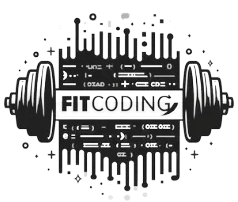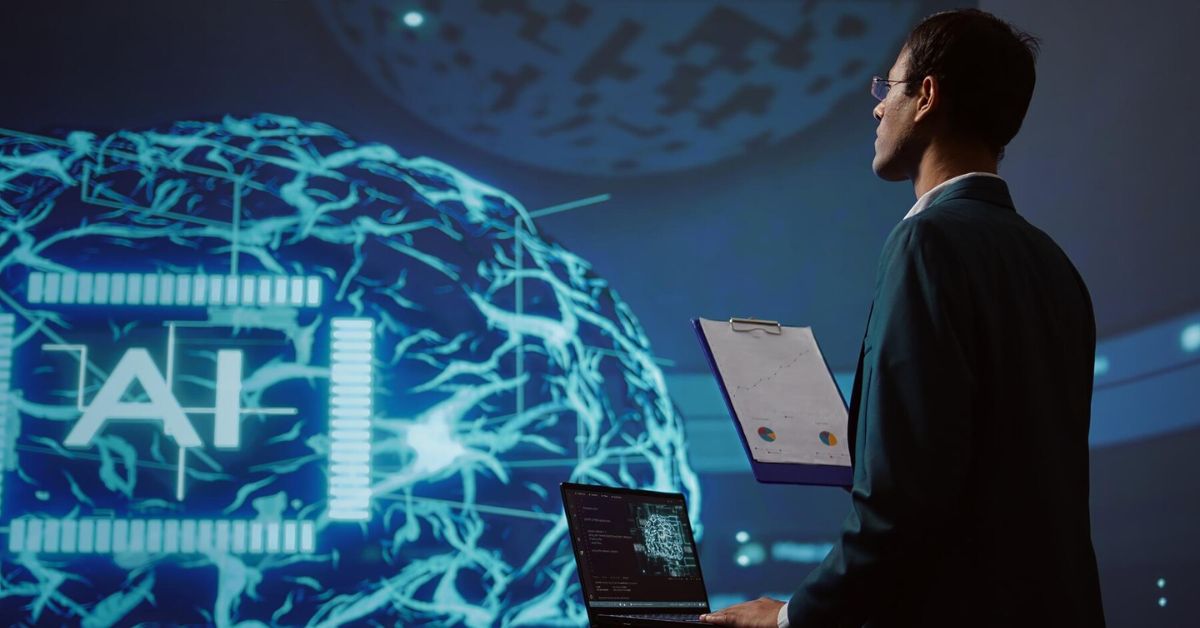Are you still using the same old rule-based automation testing? You will be happy to know that there are other, much more advanced practices that can help improve the efficiency and accuracy of a testing infrastructure. Yes! We are talking about AI for software testing. Using this process, you can implement intelligent test generation, self-healing scripts, and predictive analytics, which can anticipate defects.
The goal? Ensuring that your test cases are more accurate and efficient than you ever imagined before. Don’t know how to use AI for software testing? Don’t worry! We are here for you. Our article will help you understand how you can use AI-driven techniques to benefit the testing accuracy and speed.
What Is AI For Software Testing
Excited about using AI for software testing? Hold on to your excitement! We need to develop a clear idea about what AI is for software testing in the first place to utilize its full potential. It is the process of using machine learning algorithms to analyze huge amounts of data, including past defect logs, user behavior analytics, system logs, and code repositories.
By going through all this detailed information, the artificial intelligence model will make an educated guess about where the bugs will occur and which test cases will have the most effect within your infrastructure. Depending on all this information, you can prioritize all your testing resources accordingly.
To shed more light on this segment, let us divert our attention towards some of the major technologies that you will find while incorporating AI in software testing:
- Machine learning will allow your system to learn from historical data without any elaborate training processes. These models will help you classify the defects, predict risk areas, and also improve the test coverage depending on multiple usage patterns.
- Next comes natural language processing, which is the most important parameter to process textual data like user stories, requirements, documentation, or bug reports. Depending on this processing power, you can automatically generate the test cases or categorize bugs without going through the learning curve for the test creation process.
- You can use computer vision to implement user interface-based testing, as the tool can see the interface elements and verify them even when underlying code changes. This becomes especially useful when you need to validate the visual elements and also the graphical changes of the application.
- Predictive analytics is yet another important component that can tell you beforehand where the defects will occur or how the changes could impact the stability of your entire system. This model will also go through past bug frequencies and code complexity to predict high-risk areas and guide your testing efforts accordingly.
- Finally, deep learning is a segment of machine learning that uses various complex neural networks. Using this approach, you can find even more unpredictable patterns in complex data, which can lead to more sophisticated and accurate insights in your software development infrastructure.
How AI Enhances Testing Accuracy
Let us now divert our attention to how you can use AI models to improve the testing accuracy of your entire environment:
- Intelligent Test Generation: You must have realized that your conventional test cases rely on humans to script the test scenarios and define the expected outcomes for this process. If you proceed with AI integration, it will automatically generate the test cases by learning from the application usage data or from natural language requirement documents.
- Self-Healing Test Scripts: With AI for software testing, you can implement self-healing scripts that will monitor the application changes and adapt to them by identifying the alternative element locators or by dynamically updating the properties of the object.
- Anomaly Detection and Test Optimization: Finally, machine learning models will be the best option to identify anomalies in large data sets. When you integrate this process into the testing pipelines, the algorithm can pinpoint unusual patterns, like if there is a spikes in memory usage or transaction times. All this data will signal potential defects or performance issues in the application.
How AI Enhances Testing Speed
Ready to understand how to improve testing speed with AI? The following inclusions will help you achieve this goal:
- Automated Test Case Generation: Are you struggling to generate high-quality test cases in your development cycles? You can use AI-powered test case generation to compress the time required to design and implement the testing scenarios. It will implement this approach by understanding the user stories, code commits, or their production usage data.
You can also use this approach to quickly expand the testing suite with the growth and evolution of the application.
- Parallel Execution and Intelligent Orchestration: Using the capabilities of artificial intelligence, you can efficiently distribute the tests across multiple machines or virtual environments. It will also help you identify if you should run in parallel to maximize the efficiency of the infrastructure. You can also consider integrating cloud-based platforms like LambdaTest to integrate testing AI components through online device farms.
LambdaTest is an AI-native test orchestration and execution platform that lets you perform manual and automation testing at scale with over 5000+ real devices, browsers, and OS combinations. This platform will also provide you with a comprehensive test report after the test execution process so that you can easily find the faulty element in the infrastructure and implement all the required debugging steps.
- Automated Root Cause Analysis: We all agree that finding the root cause of any failure is one of the most time-consuming tasks of a software testing process. By using the capabilities of AI, you can analyze stack traces, logs, and application performance metrics to pinpoint the likely cause of a defect.
It will also help you to cluster the failures, reference historical bug data, and correlate the logs to dramatically reduce the time that you would be originally spending to diagnose the problems in your application.
This inclusion will also be a massive relief as it will cut down the huge back-and-forth that usually takes place between the QA teams and the development teams during the bug resolution steps.
Best Practices for Implementing AI in Testing
If you are aiming to implement artificial intelligence for software testing, we highly recommend that you incorporate the following best practices within your testing environment. We have carefully chosen these practices so they can not only improve the productivity of infrastructure but also help boost the quality of the application that is being developed:
- Since the world of AI is relatively new for almost all of us, we highly recommend that you start from a small, non-critical testing process. Depending on all the results that you achieve in this step, you can scale accordingly.
- We highly recommend that testers invest in proper logging, clear bug reports, and thorough test documentation. This step will be very important to ensure that all your test cases are meaningful and dependent on reliable test data.
- If you are trying to transition to AI in testing, you should properly collaborate with QA teams, developers, operations, and possibly the data scientists. This will be a very important step to smooth the integration process and also develop trust throughout the organization.
- Highly recommend that testers periodically monitor the AI-generated test cases, risk predictions, and other anomalies. Human expertise will be very important to ensure that all the AI in testing components are relevant and within the margin of error that was previously set.
- Finally, you must accept the reality that all your AI models will degrade over time if not updated with new data. You must regularly retrain the models on fresh defect logs, code changes, and user feedback. This approach will be critical to ensuring the continued accuracy of the infrastructure.
The Future of AI For Software Testing
Based on all the advanced features that we put forward in this article, you might presume that AI has already reached its ultimate potential. But, you will be highly mistaken if you think so! To justify our claim, let us go through some of the upcoming innovations in this segment that we are expecting over the next decade:
- Currently, exploratory testing is completely dependent on the knowledge of a human tester. However, as AI testing will continue to evolve, the tools will guide the human testers towards areas in the application that show anomalies or risky behavior.
- With the progressive improvement of NLP models, you can expect the AI model to generate test cases with more precision, even if you are using a complex, unstructured requirement document. This approach will be very important to bridge the gap between stakeholder expectations and the real testing outcomes.
- Hyper-automation will be a reality with the improvement of AI models, as it will help you automate as many tasks as possible in both the development and the testing environment. This approach will help transform the entire quality assurance process into a smoothly running, self-correcting pipeline.
- In the future, you will be able to combine model-based testing tools with artificial intelligence to generate and maintain the entire set of test cases from the system models. This will be a very adaptive approach as you can refine and optimize the models depending on multiple real-world datasets.
- Finally, robotic process automation will be able to pair with AI-based decision-making to replicate various user journeys. These robotic testers will learn how to navigate an application like a natural human tester to massively reduce the time spent creating and maintaining the UI test scripts.
The Bottom Line
Based on all the discussion points that we have covered in this article, we can easily and safely say that software testing is currently relying on the evolution of AI, as it can provide the ability to test more accurately and at higher speeds than before.
We strongly recommend that organizations invest in AI-driven testing to uncover all the benefits that we have mentioned in this article. Moreover, by incorporating our best practices and strategies, you can create highly accurate, more efficient, and precise test cases.
Finally, you should always remember that artificial intelligence, however advanced it might be, can never completely replace the experience and judgmental capabilities of a human tester. Instead of the replacement theory, you should always aim to maintain the proper balance between human expertise and artificial intelligence’s efficiency.











